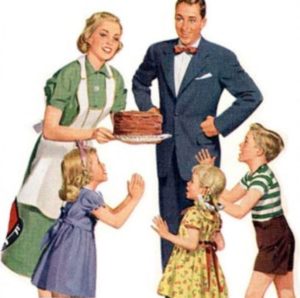As we all do our bit to fight the virus crisis, our advances in gender equity will be challenged during the imposed isolation and closure of schools, says KATE MEIKLE
“IT’S like we are back to the 1950s and the return of the nuclear family,” says my husband.
 Many hold those “wholesome” and simple times up and romanticise them. But they come at a price for women, especially those with children.
Many hold those “wholesome” and simple times up and romanticise them. But they come at a price for women, especially those with children.
If we aren’t dealing with the coronavirus directly (my heart goes out to those who are) and I hope many of us will not have to, family and work life of some socially isolated kind must go on.
What is this going to look like for women?
Many mothers are now thrown into a “stay-at-home” scenario whether they wanted to or not. Family violence is a chief concern as our networks and safety nets are not physically available to us as before.
The division of labour between male and female partners and the tensión between work inside and outside of the house is highly politicised.
Now we are experiencing a merging of both as some parents attempt to work from home and home school their children or in many cases a decrease or complete stop of paid work outside the home.
Like many, I’ve been shocked, angry, frightened and stressed over the past three weeks like no other time in my career, all the while trying hard to be a “good” mum to our kids.
We are all playing our parts, trying our best and I know that my children need me more than ever, but I mourn my lack of freedom, my decreased ability to work and a change in my identity after long days at home with the children, with the added cleaning that comes with having everyone home all the time.
Families are now negotiating, doing the maths and working out how this new normal is going to be, especially in light of the public schools going online for term two.

Who will stay at home? Who will “work”? Who still has a paid job and how will we divide the increased home duties and parenting?
Home schooling will test us all, but the ability to set young learners up with their tasks and support them when they cannot read very well, at the same time managing younger children or babies will be very hard.
It’s a full-time job and parenting was never meant to be done in isolation. Good luck to those attempting to “work” their jobs at the same time.
It’s encouraging that within my friendship group we are seeing many versions of sharing the load including dads at home full time when they never have been before, a 50/50 split between who is able to be on their laptop and who is in charge of the toddler and taking turns to work at night.
“No one will ever ask what a stay-at-home mum did all day from now on,” says a meme that has been doing the rounds. I hope that as a society we shift our understanding and respect for those who care for and educate children, including stay-at-home parents.
My three-year-old daughter decided to give herself a new fringe (think mohawk) with a pair of safety scissors as I was folding laundry in another room last week.
It was a funny story to relay to friends and family, but I felt a pressure to quickly emphasise that I wasn’t doing something indulgent such as talking on the phone or checking my emails while she was doing it, that I hadn’t dropped the ball in my supervision of her, that I wasn’t a “bad” mum. More parenting “fails” will come out of this unusual scenario as we muddle on, isolated but united, I hope.
I truly hope the 1950s aren’t here to stay.
Who can be trusted?
In a world of spin and confusion, there’s never been a more important time to support independent journalism in Canberra.
If you trust our work online and want to enforce the power of independent voices, I invite you to make a small contribution.
Every dollar of support is invested back into our journalism to help keep citynews.com.au strong and free.
Thank you,
Ian Meikle, editor




Leave a Reply